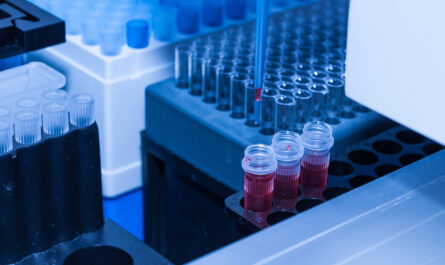
Packaging Development for Implants
A critical component in developing medical implants sterile packaging is designing suitable packaging that maintains sterility until implantation. Packaging development involves extensive research and testing to select appropriate materials able to withstand sterilization processes while preventing microbial contamination. Key factors in packaging design include barrier properties, ease of opening in the operating room, resistance to punctures or tears. Manufacturers collaborate with packaging engineers to create custom solutions meeting strict regulations. Prototypes go through validation to confirm the packaging can withstand typical hospital logistics and storage conditions without compromising sterility.
Sterilization Method Selection
Once packaging is finalized, manufacturers must select the sterilization technique. The most common methods for implants are ethylene oxide gas sterilization and gamma irradiation. Each has advantages but also presents unique challenges. Ethylene oxide is highly penetrating but toxic residues must dissipate before use. Gamma radiation does not leave chemical residues but can degrade packaging and device materials over time with repeated exposures. Extensive testing validates the sterilization technique, packaging configuration, and shelf life combination to ensure packaging maintains an aseptic barrier. The chosen sterilization method and packaging configuration are rigorously validated together.
Maintaining Sterility until Point of Use
Validated sterile medical implants must maintain their sterility under the diverse handling and transportation conditions seen in healthcare. Packaging engineers incorporate multiple barriers and strict distribution controls to prevent contamination. Implant cassettes, trays or pouches are typically sealed inside outer wraps or containment systems with tamper-evident seals. These secondary barriers protect the sterile field within during transportation and hospital storage if an inner package is breached. Distribution systems strictly control environmental conditions like temperature and humidity. Hospitals must also properly store implants in designated areas until use toprevent exposure to moisture, dirt or other contaminating materials that could compromise sterility.
Regulatory Compliance of Packaging and Labeling
Medical implant sterile packaging highly regulated to ensure consistent, unambiguous communication of critical sterility and traceability information. The U.S. FDA and other agencies require validation that packaging will maintain a predetermined sterility assurance level under defined distribution conditions. Manufacturers must demonstrate packaging can withstand distribution simulations assessing factors like temperature, humidity, vibration, and compression without affecting the sterile barrier or label legibility. Device labels must clearly display expiration dates, sterilization information, unique device identifiers and other details to facilitate efficient lot traceability and identification in the healthcare system. Ongoing packaging and distribution audits verify ongoing compliance.
User Experience Considerations
While protecting sterility is paramount, packaging usability in the operating room is also important. Surgeons and medical personnel prefer packaging that is intuitive to open without compromising the sterile field. Some factors under consideration include peel-open pouches versus klips or rigid container lids, label placement and readability, minimal extraneous packaging materials to discard. Ergonomic package trays allow for efficient organization of components. Operating room simulations provide feedback on handling, organization of contents and dismantling of packaging that help drive further packaging design refinements. The goal is packaging supporting efficient clinical workflows rather than introducing inefficiencies or potential for user error.
Evolving Packaging Technologies
Advances in materials science and manufacturing technologies continue improving medical implant sterile packaging. Applications of barrier films, lidding technologies and sealing methods enhanced packages’ material compatibility and strength. Active and intelligent packaging utilizing oxygen scavenging ink, moisture indicators and RFID are being explored to monitor environmental factors and product authenticity. Advanced sterilization methods like hydrogen peroxide gas plasma provide sterilizing capabilities at lower temperatures reducing packaging material degradation risks. As new device designs and surgical techniques evolve, packaging engineering similarly progresses to address changing needs. Innovation helps ensure reliable, protective and user-friendly solutions for delivering sterile implants to the point of patient care.
In conclusion, medical implant sterile packaging plays a vital yet often underappreciated role in the implant development process and patient care continuum. Designing packaging that maintains sterile barriers during manufacturing, sterilization, lengthy shelf lives and hospital logistics requires extensive validation and quality controls. Packaging also contributes to economic and environmental sustainability goals through optimized designs minimizing material usage and waste generation. Evolving technologies will enable even more intuitive, communicative and customizable solutions supporting patients and medical professionals into the future. Overall, well-designed and properly implemented sterile packaging helps implant manufacturers fulfill their core missions of delivering safe, effective devices to improve patients’ lives.

